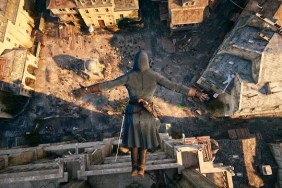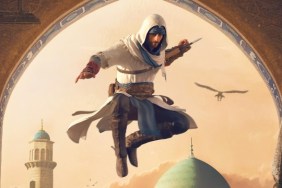Offshoot shoot-off.
For better or worse, nearly everything about Borderlands: The Pre-Sequel screams "offshoot." The game takes place between Borderlands 1 and 2, and since the journeys for most of the playable characters are resolved in Borderlands 2, you probably won't be terribly surprised how the story ends here. The setting for the moon creates interesting low-gravity gunplay, but since future Borderlands sequels likely won't be set on the moon apart from a few levels or DLC, you can bet that this gimmick is pretty much a one-shot deal. And of course, the Pre-Sequel is developed by 2K Australia instead of Gearbox Software, though you can be sure that Gearbox oversaw and approved what the team down under was doing to their beloved franchise.
The crux of Borderlands: The Pre-Sequel's plot revolves around the idea that villains are the heroes of their own story. Wedged between the third and fourth DLC campaigns for the original Borderlands—specifically, between The Secret Armory of General Knoxx and Claptrap's New Robot Revolution—the four new Vault Hunters assist and witness the transformation of the Hyperion middle-man Jack into the notorious Handsome Jack, the sarcastic, narcissistic villain of Borderlands 2. Wilhelm is the cybernetic muscle, Nisha fires fast and loose, Athena has a damage-absorbing Captain America shield, and Claptrap is a wildcard who can summon a disco ball if he gets lucky.
Similar to the narrative construction of Dragon Age 2, the plot is told from the future through the eyes of Athena, who you might recognize as an essential NPC from General Knoxx as a rogue agent who defects from the Atlas Corporation and feeds information to the original Vault Hunters. Her support of Handsome Jack in Borderlands 2, however, has been taken as a betrayal, and while the original Vault Hunters have her tied to a pole, she's coerced into telling the reasons for why she and the other heroes in the Pre-Sequel sided for the supposed enemy.
If you care for the Borderlands plotline, behind the facade of wacky, referential absurdity, then you'll probably find this anti-hero twist interesting, but not much more than that. The humor doesn't have the same punch as it does in Borderlands 2, and the numerous cameos of other Borderlands characters might make you wish that you were playing as them instead. This isn't to say that Athena the Gladiator, Nisha the Lawbringer, Wilhelm the Enforcer, and Claptrap the Mistake don't have their moments. In a nice touch, far more lines of dialogue than before will change depending on which character you choose to play, with some going so far to address the playable character by name. Witnessing Jack's morality erode as he cunningly attempts to save the moon provides an interesting perspective on his character as well.
But it's not worth getting upset or emotionally invested over what happens to most of the characters in the Pre-Sequel given their villainous roles in Borderlands 2. Making fans care about a prequel is difficult enough, so getting them to care about the villains on top of that is an incredibly tall order. This isn't impossible of course, but it requires a certain depth and subtlety that Borderlands isn't particularly strong at conveying when its style is all about snappy quips and meme-based humor.
For the most part, the Pre-Sequel follows the general loot-based combat that the series is known for: the random, color-coded drops of guns and money that spew from fallen enemies, the three-pronged skill trees that begin with a character's specific action skill, and the checkpoint system that respawns your character if you fail the Fight for Your Life phase. You'll travel to a hostile area, shoot enemies in the head or at their brightly-colored weakpoints, watch higher-quality weapons spew from the corpses of bosses and "Badass" grunts, open chests for ammo and all manner of loot, find a vending machine or head home to sell unwanted equipment, rinse and repeat.
Despite the moon setting, you'll discern plenty of reskins and replacements. Eridium bars are now Moonstone clusters, bandits are now skavs, psychos are lunatics, Sanctuary is Concordia, the Outrunner is the Moon Buggy (but with poorer handling), and Crazy Earl is… still crazy. For the sake of spoilers deeper in the game, I've left out a laundry list of other likenesses and set pieces from Borderlands 2, but I'm sure fans will recognize the similarities. This reappropriation of assets—if I'm putting it nicely—is more or less expected for an offshoot, though the noticeable palette swapping does cheapen the effect for a game asking for full price.
At the very least, the Pre-Sequel follows through with low-gravity idea by making jumps slower but higher and requiring every playable character except for Claptrap to be careful about oxygen reserves. Oxygen tanks, though limited in capacity, can provide an extra jump boost and accelerate a friend's revival, so making sure you've got a full tank by standing inside oxygen cyclers or enclosed environments is important before heading into battle. Levels have been designed with extra wide gaps and extra high platforms in mind, and crouching while airborne will create a powerful ground slam which assault-minded players would be keen to use during reloads.
On the flipside, oxygen becomes yet another bar on the screen to maintain and there will be times when you'll forget about it when you're caught in an intense firefight. While there are numerous places to recover oxygen, having to stop combat and rush to a nearby cycler gets irritating fast. So don't be surprised to find an abundance of Claptrap players if you search for multiplayer matches. The wider gaps between platforms normally isn't a problem, though; that is, except for vehicles like the moon buggy which is so unwieldy that you'll likely find yourself in a pit.
Replacing the slag-based weapons in Borderlands 2, cryo-based weapons can freeze enemies, sending airborne bastards to the ground and allowing you to shatter them like a Sub-Zero fatality. Laser weapons effectively replace E-Tech weaponry which tended to be more trouble than they're worth. The skill trees for the four playable characters have been tailored for multiplayer in mind too with skills that can impact everyone on the team. Over the course of the game you'll be introduced to The Grinder, which can be fed several weapons (it works best using guns of the same type and quality) to create higher-quality ones. You can also purchase 30-minute boosts from Moxxi's bar using any excess moonstone you have wasting away in your inventory.
Playing the Pre-Sequel on the highest graphical settings on PC does compare favorably with Borderlands 2; on Xbox 360 and PS3, less so. However, the moon can be a terribly gray world with but the occasional blood-orange magma and the scenic starry sky. With a few notable exceptions, the craggy, washed-out environments tend to blur together with only a few notes distinguishing them from each other. The dull, unmemorable music doesn't bode well either. There have also been various reports on game-breaking bugs, though I haven't experience any quite so severe.
Borderlands: The Pre-Sequel feels like an extended standalone expansion pack that doesn't last as long as Borderlands 2 but asks for a premium price. If you're a Borderlands fan who's looking to scratch that itch for loot-based four-player firefights, then this will serve your needs well until the next core installment in the franchise. Otherwise, you're better off waiting for the inevitable Game of the Year package. Borderlands: The Pre-Sequel fails to reach the stars, but at least it maintains orbit.
-
Villain-as-hero concept
-
...but too difficult to care about villains and prequel setup
-
It's more Borderlands
-
Retains solid multiplayer
-
Low-gravity jumping and oxygen tanks
-
Cryo-based and laser weapons
-
Grinder and moonstone boosts
-
Obvious palette swapping
-
Reportedly buggy
-
Gray environments and mediocre music
Borderlands The Pre-Sequel PAX
-
Borderlands The Pre-Sequel PAX #1
 [Click image to enlarge]rn
[Click image to enlarge]rn -
Borderlands The Pre-Sequel PAX #2
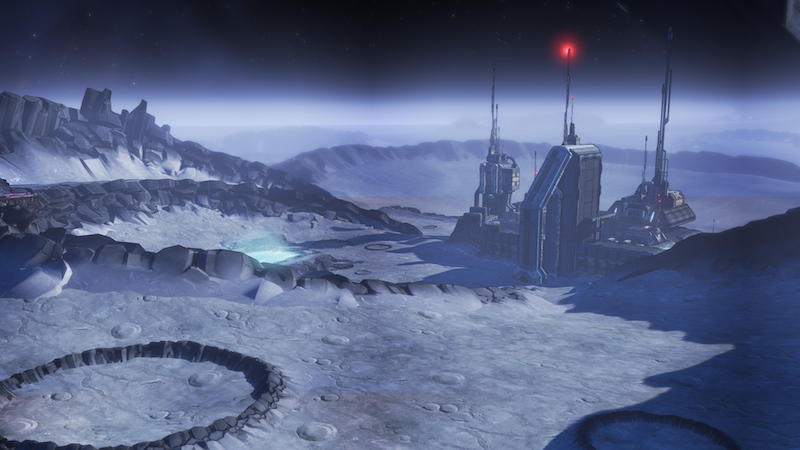 [Click image to enlarge]
[Click image to enlarge] -
Borderlands The Pre-Sequel PAX #3
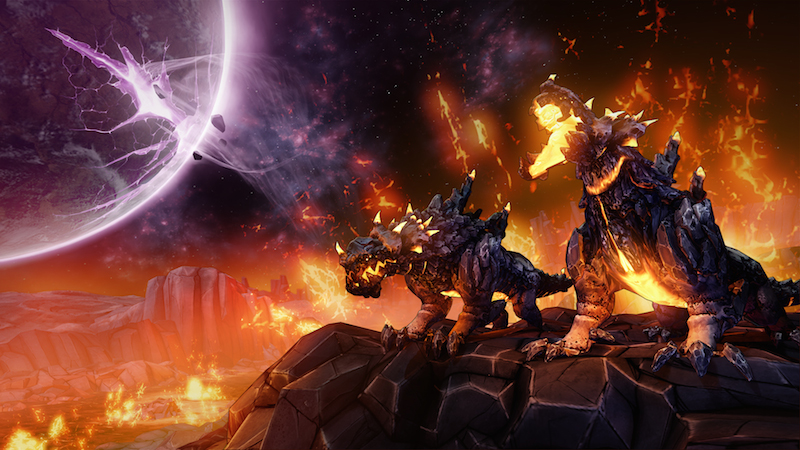 [Click image to enlarge]
[Click image to enlarge] -
Borderlands The Pre-Sequel PAX #4
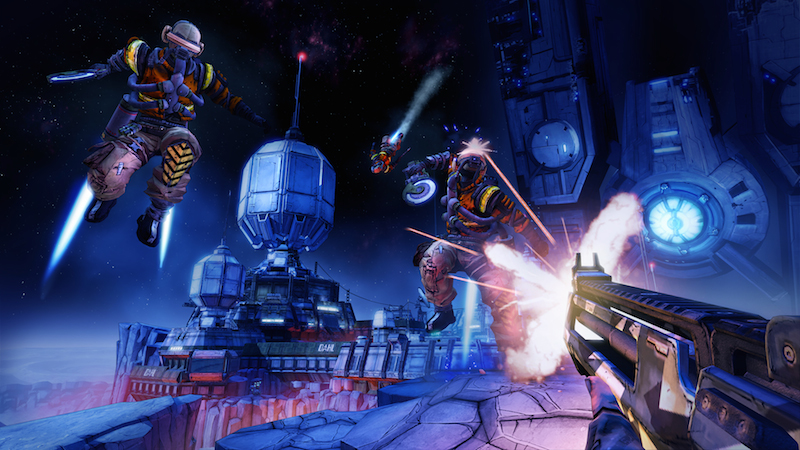 [Click image to enlarge]
[Click image to enlarge] -
Borderlands The Pre-Sequel PAX #5
 [Click image to enlarge]
[Click image to enlarge] -
Borderlands The Pre-Sequel PAX #6
 [Click image to enlarge]
[Click image to enlarge]






